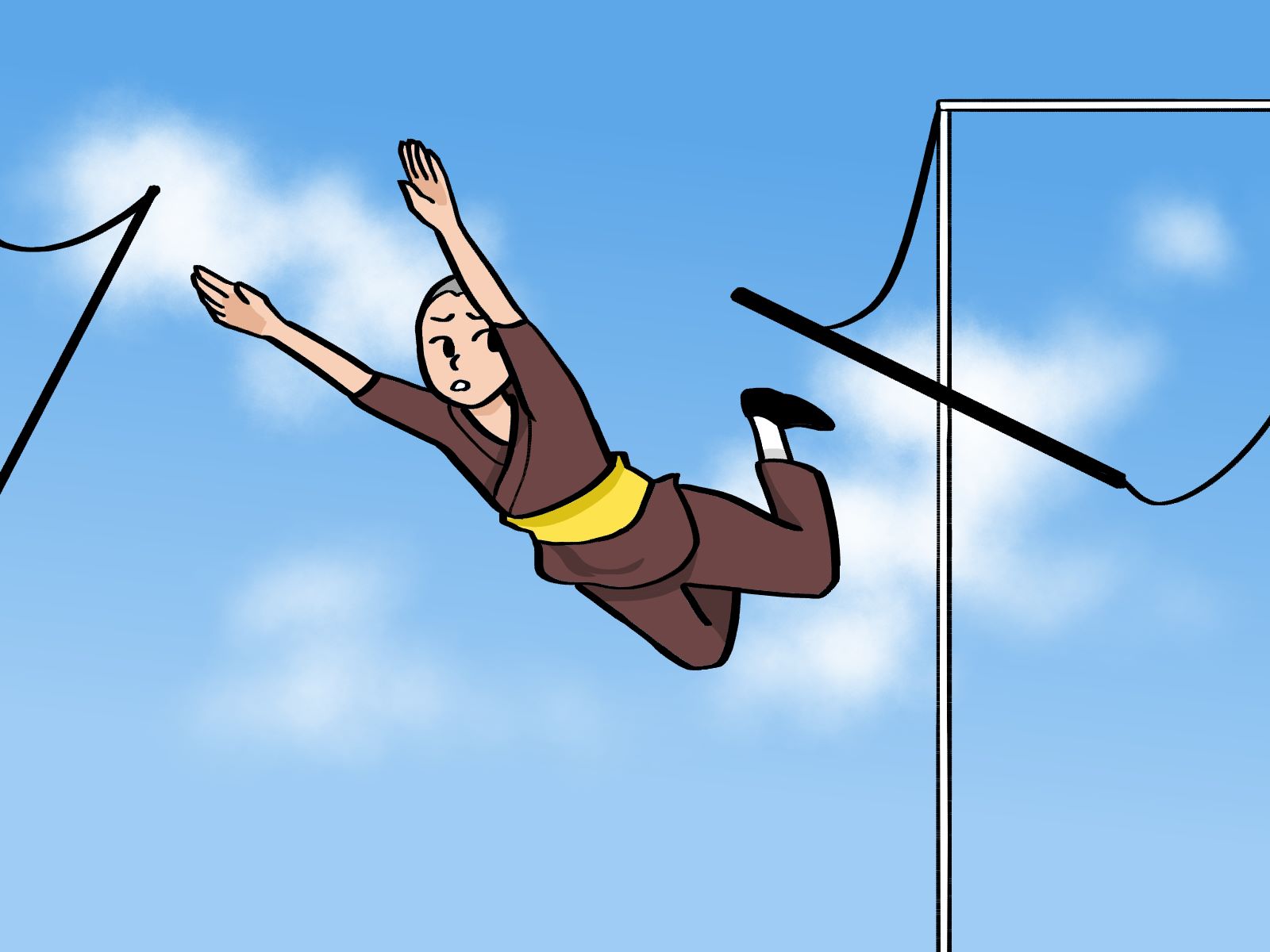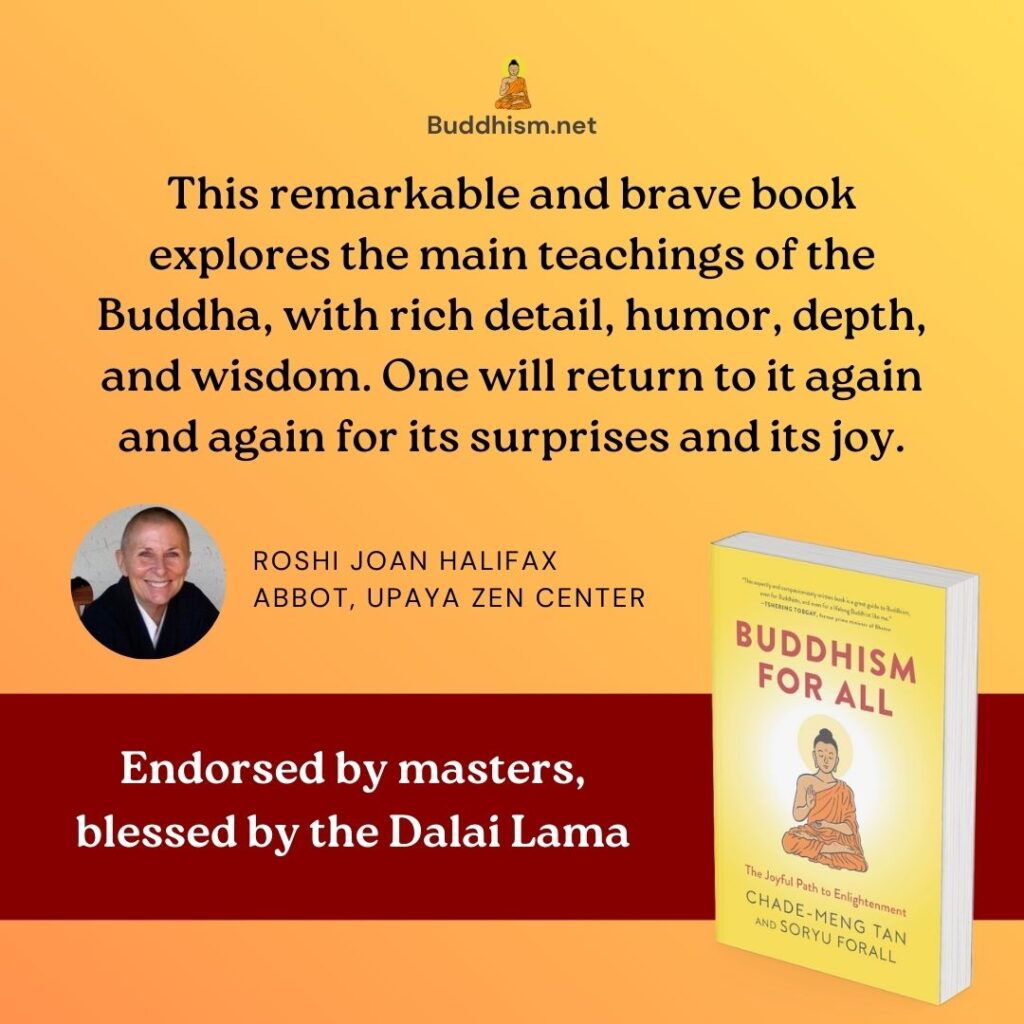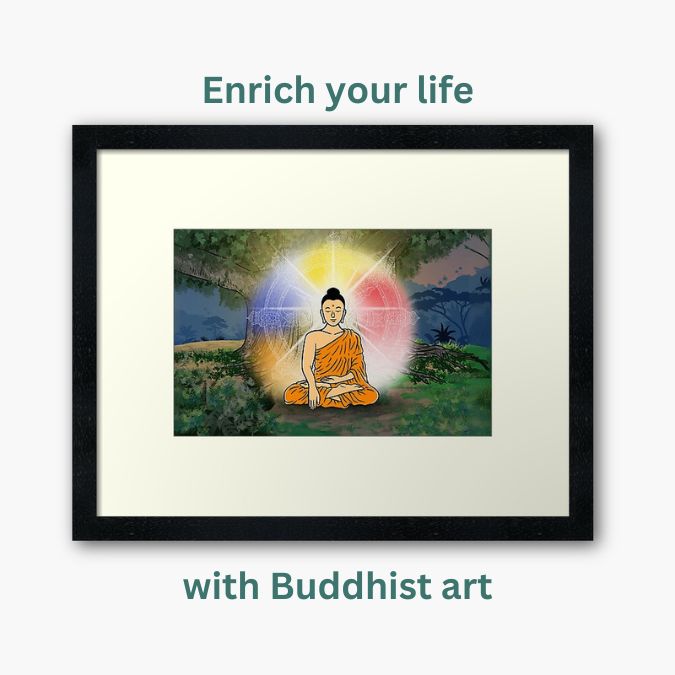
(Continued from Part II.)
Step 7: Wrestling with profound resistance.
Like Helena finding that her most powerful enemy was an even mightier duplicate of herself, and that her only solution was to charge at it without any hesitation, Susan would soon find no way forward, except right through the person she thought she was. Doing this would give her great power, yet like Helena, the great challenge would be letting go of even that.
As we saw in Part II, things were deepening and seemed to be going very nicely for Susan, but suddenly, seemingly out of nowhere, she faced a huge challenge: her mind wanted to revert. Despite her significant accomplishments on the path, or more accurately, precisely because of her significant accomplishments, grasping and identification became incredibly strong. She found herself in the midst of her oldest patterns, totally buying in. She made drama in the community to distract herself from her own path, yet saw herself as the victim. She refused to believe that anyone could care about her. She framed the fact that she had worked so hard but was not yet free as proof that she couldn’t ever get free. She watched herself use attachment to create suffering, and then she used that suffering to convince herself that there is no way out of attachment. When given instruction on liberation from selfishness, she responded with statements such as, “What you just said was very hurtful.” She thought up reasons for not letting go, and they became increasingly believable to her as she repeated them to herself and confided in people outside the training. Her ego used all the tricks in the book to regain control.
One of the most effective tricks the ego uses is getting attached to specific kinds of superb meditative states. Two of the most powerful states are non-dual awareness and non-conceptual awareness (which Susan entered later on, but they are worth discussing here). In the former, distinctions between inside and outside, right and wrong, existing and non-existing, are set aside. Without duality, there isn’t a way to decide anything, so one cannot make a mistake, and the path opens without mistake. In the latter, the concepts we constantly impute are set aside. We no longer add on a story, an idea, to each phenomenon, we directly encounter experiences rather than our concepts about them. We become unable to delude ourselves about what is happening, so the path opens without mistake. Both of these states are excellent, and most people do not spend enough time in them. But there is a trick to make these medicines into poison: get attached to them. The most effective way to get attached to them is to think that they are the final goal, that they are enlightenment. And it is possible to make this affliction even worse by adding an identity around it, for example, “I have had this non-dual or non-conceptual experience, so I am enlightened.”
As powerful as non-dual and non-conceptual awareness are, they are not the final goal. They are not nirvana, not enlightenment, not awakening. Many people have been tricked into mistaking them for enlightenment. Some people have written books proclaiming their own “awakening”, not knowing that the real goal is beyond. If you get attached, you will get stuck here. The way to use non-dual awareness to propel you towards nirvana is to completely let it go. It is akin to Helena completely letting go of Storm Maker by dropping it in the sea, due to the guidance of the goddess.
It may seem very hard to find and train under a good teacher, but it is important because a good teacher will not let us get stuck in these states. (Of course, if they themselves are stuck here, they will actually hinder us further.) Getting stuck here, caught in perception again, is tragic because one is so close to true insight. The price of working with a good teacher is worth it, since they help us to avoid this tragedy. In the end, we must come back to the path of letting go. It isn’t about grasping to, or identifying with, a certain kind of experience. It is about letting go.
So the only question for Susan was whether she could re-establish her willingness to let go. This was difficult. It was difficult in the way that getting free of alcoholism is difficult, or the way that getting out of generations of poverty is difficult, or the way that fleeing from a militia across a continent without food is difficult. Please don’t think that these metaphors are mere poetic hyperbole. Letting go can be that difficult.
Why did this happen to Susan? It is actually a common occurrence for those who make real progress and then hesitate. It is like a trapeze artist who, while in mid-flight from one trapeze to another, decides to grab hold of the previous trapeze instead. The important implication: this does not happen to those who do not hesitate (or those who did not make real progress to begin with).
Over time, Susan found her way through the resistance and the pain she was creating. Two things got her through: her prior training in virtue, and being surrounded by good, trustworthy friends who understood the practice. Of course, this step can take place at any time, and can take place repeatedly. It isn’t really the seventh of ten steps, since it’s always waiting for the moment we hesitate to strike.
Step 8: Clarity, and the abandoning of all hesitation.
Eventually, in the midst of the suffering she herself was creating, right in the middle of distrust of others and herself, Susan realized that there is no way out. This must be done, whoever we are, in whatever circumstances we find ourselves. Liberation is what we were born to do, and this has nothing to do with how you see yourself, or how you see others, or what you want, or what you don’t want.
She saw that no matter what, no one has control over impermanence. She saw that there is no safe place where she will not be destroyed, and that all of her suffering was caused by her own ignorant mind. She saw that every action she takes, even the slightest thought, leads to happiness or sadness. She finally gave in to the understanding that we most try to avoid, the understanding that benefits us most deeply: She realized the totality of her vulnerability, and the totality of her power. She finally experienced the confidence of knowing that her own selfishness is the only problem in the world, that she never had any right to complain about anything, that she must break free of herself or die trying.
She came to know what the Buddha himself meant when he said that just before his enlightenment, his mindfulness became ceaseless and his effort became unrelenting[1]. The barriers that seemed insurmountable crumbled before her, opening the way. It was wonderful. All her previous achievements in life, such as getting a romantic relationship, or succeeding at a job, or caring for a family member, were not one tenth as fulfilling as each day of this adventure, this supreme adventure. She began to experience the most fun she had ever known. Also, the most urgency, the most joy, the most desperation, the most exhilaration, the most horror, the most peace, the most exhaustion, and the most energy. Why? Because she accepted what she had to do, and she did it without hesitation, without compromise, without reservation, without negotiation.
It was as if all eight parts of the Noble Eightfold Path were running in high gear, moving Susan along without mistake.
Step 9: The Dharma comes alive, at the unity of investigation and letting go.
(Warning: you may not find everything in this step understandable. That is because it is the description of Susan’s experiences, and the closer we get to nirvana, the less understandably they can be described.)
At this point, everything taught by the Buddha finally appeared to come together for Susan. Total urgency and total peace became one. Not one moment was wasted. Not one moment was grasped.
First, craving was understood. While craving was still latent in Susan’s mind, she no longer believed in any of its three forms: craving for sense pleasure, craving for existence, and craving for non-existence. (a) She had set aside the sense that she should get what she wants. (b) She had set aside the sense that the most important thing, in the end, when your life is at risk, is to protect yourself. (c) She had set aside the sense that the spiritual path is about destroying oneself.
With her life on the line, with total courage and without holding back, Susan was now able to enter and abide in deep samadhi during formal meditation. While abiding in that samadhi, she just forgot herself in each moment. She forgot everything she thought, everything she felt, everything she perceived. In this way she experienced all of it completely and honestly. This state is not easy to explain, but it is also very simple: her mind was now like a mirror that accurately reflects everything because it does not hold on to anything. Any grasping to body or mind is cut off as it arises. Consciousness is free from grasping: it is not caught on anything, it has no conflict with anything. Because of this, not only does it let go of things once they arise, it does not even grab onto them at the moment they arise. Therefore, it can be seen that all phenomena pass away the moment they arise, and there is nothing found to grasp onto at all.
This is experiencing everything so fully that nothing can be found. This is the beginning of understanding what the Buddha taught Bāhiya, and here identity view begins to fall away. She settled into unrelenting energy and ceaseless mindfulness, so deeply that she couldn’t be distracted or disturbed even if she tried.
During formal meditation, she entered formless realms in which perception attenuates, dwindles, and dissolves. In this state of samadhi, she found only vast emptiness and brilliance everywhere. She maintained non-dual awareness in which there was no distinction between self and other. She could not find suffering anywhere at any time, yet the path continued to open. She maintained non-conceptual awareness in which all things were known directly without the medium of mental constructions. She could not find delusion anywhere at any time, yet the path continued to open. This brought forth a new wisdom beyond her ideas of what could be possible.
That was important, but there was something else even more important: the non-grasping kept going whether she was in formal meditation or not. The quintessential aspect of this step is that endless energy and mindfulness continues all day long. She could mop the floor without grasping onto body or mind. She could see the mountains without grasping onto self or world. Again, this did not stop for one moment through the day. Not one thought about herself or her practice or her circumstances, not one moment of doing, not one moment of knowing. Both doing and knowing, both body and mind, were coming to rest, and the rest they were settling toward is true peace.
With the decline of interference by the activity of body and mind, Susan could now see things as they truly are, specifically, the three marks of existence. This is both horrifying and the most pleasant and wonderful experience of a person’s life up to this point. She could see for herself what we usually just read in books. How are things truly? (1) Things are impermanent. They do not remain, even for one moment. Therefore, if we hold onto them for even one moment, (2) they are dukkha (suffering). They are that which hurts us, if we try to do what cannot be done, namely, grasp them. And (3) they are revealed as non-self. While she hadn’t completely realized this yet, it was nonetheless undeniable.
Everything her mind added on was cut off and her mind had nothing to hold onto. It could not feed itself with its own conceptual imputation, and it could find no support for its views anywhere. The feedback loop between consciousness and name-and-form, the illusion most people call reality, was falling apart. She was seeing for herself the functioning of dependent origination, especially its first four elements: ignorance, formations, consciousness, and name-and-form.
She saw that the support for her mind, the world, was made up by her mind, that this made-up thing called the world made up another made-up thing called her mind. She saw that this feedback loop between consciousness and name-and-form produces the illusion of existence, but neither existence nor non-existence have inherent reality. The Buddha’s profound teaching on the emptiness of all five aggregates became clear[2]. Therefore, without grasping to any of them, and especially without grasping to constructions of mind, she could ask, “What is this?” And she did ask. She asked with everything she had, giving all of it to this one question. The enlightenment factor of investigation, settled by tranquility and fueled by urgency, come forth fully. For her, there were no things. There was no one perceiving things. All signs of all things were not acquired in any way. The Buddha calls this the signless liberation of mind[3].
Her mind was unperturbed and unperturbable, constantly being corrected, in each moment, by the Dharma as it revealed itself. She gained mastery in mindfulness and equanimity, knowing for herself the import of the powerful mind described in the passages on jhāna. Every experience purified her mind, and moved her towards relinquishment, release and liberation. Up until this point, effort is essential to the path. She had struggled for years to bring forth true effort and had just found it a few days ago, but as this ripens, even effort loses its meaning. Soryu says poetically, “There is only faith, the great energy of the whole universe coming to its end.”
Step 10: The breakthrough.
This breakthrough happened to take place during a talk on the classical teachings of the Buddha, just like the teachings you have learned in this series. It was unexpected, peaceful, unmistaken, and joyous. There is just no place anywhere for a self. Not inside, not outside, not in between. Not before, not after, not now. Everything is resolved. The bond broken, the obstacle obliterated, no conflict remains.
I asked Soryu to name it, and he says beautifully:
What could we call this? This can’t even be called peace and joy. It can’t even be called perfection. It’s better, incomparably better, than perfection. If there is anything at all, there is only the offering of love to all beings in all directions, without limit.
The path does not end here. It leads on to further insights and deeper compassion. But this is a point of no return. May we all let go to this point and beyond, for the benefit of all living things.
Activities
- Reflect on this post with Angela:
- We can all practice letting go in our lives. Venerables and Buddhist teachers continually remind us that the whole path is about letting go. This path has to be walked courageously with wisdom and compassion because ultimately, we are letting go of our contrived ego self. What is ‘letting go’ to you? To what extent have you let go? What remains? What more work do you need to do?
- This teaching from the Buddha from Udāna 1.10 was a revelation when I first heard it many years ago. It’s worth coming back to, and complating, again and again:
- “Bāhiya, you should train yourself thus: In reference to the seen, there will be only the seen. In reference to the heard, only the heard. In reference to the sensed, only the sensed. In reference to the cognized, only the cognized. That is how you should train yourself. When for you there will be only the seen in reference to the seen, only the heard in reference to the heard, only the sensed in reference to the sensed, only the cognized in reference to the cognized, then, Bāhiya, there is no you in connection with that. When there is no you in connection with that, there is no you there. When there is no you there, you are neither here nor yonder nor between the two. This, just this, is the end of suffering.”
- I will contemplate, meditate on this teaching, again, and again. I encourage you to do so too.
- What stood out to you from this article? Why?
References
[1] Majjhima Nikāya 19.
[2] Saṃyutta Nikāya 22.95.
[3] For example, see Majjhima Nikāya 43 and Saṃyutta Nikāya 41.7.
Featured image by Natalie Tsang.


